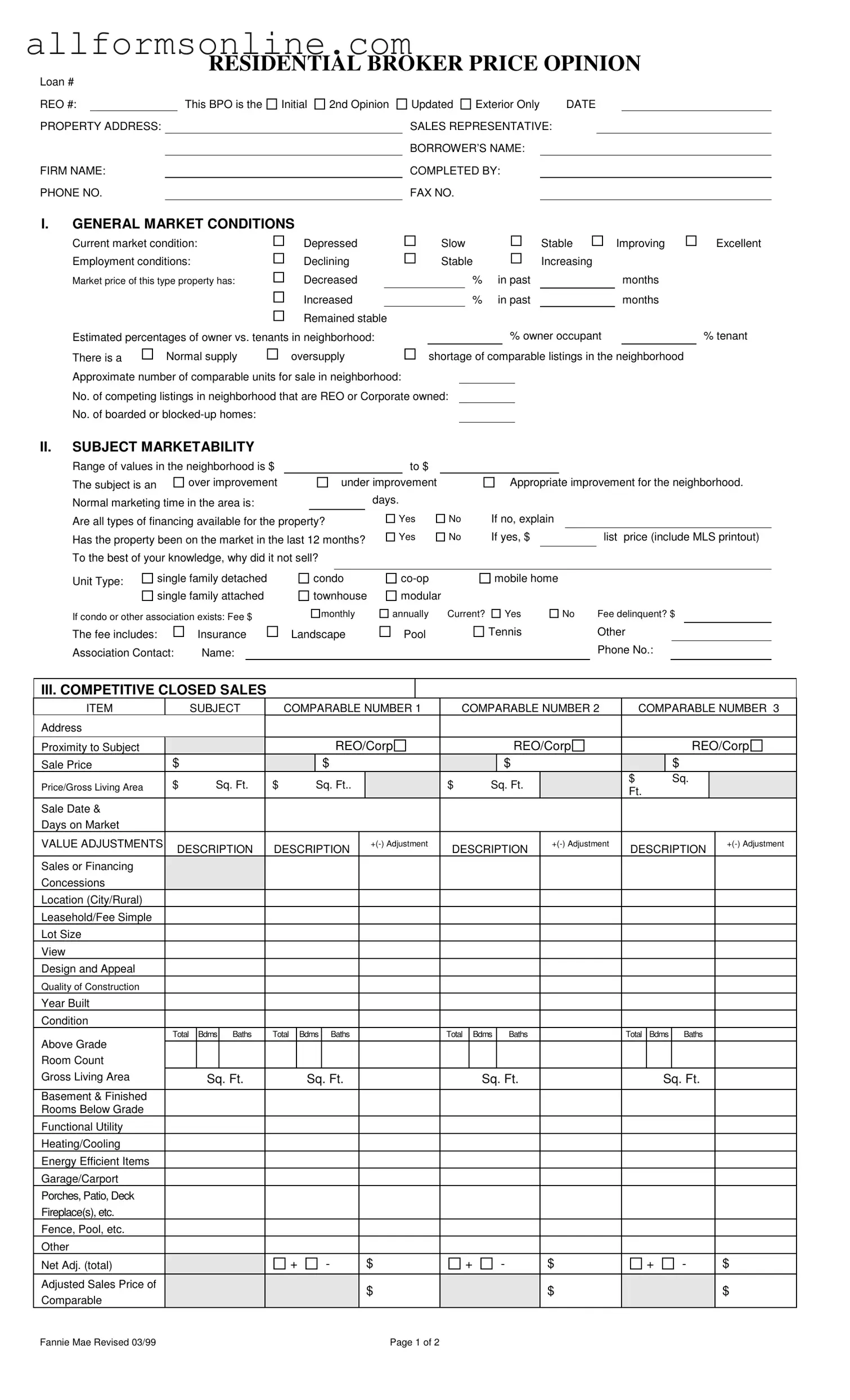What is a Broker Price Opinion (BPO)?
A Broker Price Opinion (BPO) is a professional assessment of a property's market value, typically prepared by a licensed real estate broker. It helps lenders, buyers, and sellers understand the current market conditions and what a property might sell for. BPOs are often used in situations like foreclosures, short sales, or when determining the value of a property for financing purposes.
What information is included in a BPO form?
A BPO form includes several key sections. It covers general market conditions, such as employment trends and housing supply. It also assesses the subject property's marketability, comparing it to similar properties (comps) in the area. Details about repairs, marketing strategies, and competitive listings are also included. This comprehensive approach helps provide a clear picture of the property's value.
How is the market value determined in a BPO?
The market value in a BPO is determined by comparing the subject property to similar properties that have recently sold in the area. Adjustments are made based on differences in size, condition, location, and features. The final value is suggested based on these comparisons and the current market conditions.
Who uses a Broker Price Opinion?
Various parties utilize BPOs. Lenders often request them to evaluate properties for loans or foreclosures. Buyers and sellers may also use them to understand a property's value before making decisions. Real estate agents may prepare BPOs for clients to help guide pricing strategies in the market.
What is the difference between a BPO and an appraisal?
While both BPOs and appraisals aim to determine property value, they differ in their processes and purposes. An appraisal is typically more formal and detailed, conducted by a licensed appraiser. It often follows strict guidelines and is used for legal and financial transactions. A BPO is less formal and can be completed more quickly, making it a cost-effective option for certain situations.
Can a BPO be used for financing purposes?
Yes, a BPO can be used for financing purposes, but it may not always replace a formal appraisal. Lenders may accept a BPO for certain types of loans, especially in cases where time or cost is a concern. However, for larger loans or specific requirements, a full appraisal may still be necessary to meet regulatory standards.
